Luigi Di Ponti invented the Moka Pot in 1933, and Alfonso Bialetti started making it, changing how people brewed coffee at home. This stovetop espresso maker, a key part of Italian coffee culture, is now a favorite in kitchens worldwide. Its unique octagonal shape isn’t just for looks; it helps spread the heat evenly to make the perfect cup of coffee every time.
The Moka Pot brews coffee by using steam pressure to push boiling water through ground coffee. It has three parts: a bottom chamber for water, a middle filter for the coffee grounds, and a top chamber where the coffee ends up. Unlike espresso machines, which need a lot of pressure, the Moka Pot makes strong, concentrated coffee with less pressure, making it a key part of coffee culture in Italy and around the world.
People everywhere love the Moka Pot for its easy, cheap way to make delicious, rich coffee. It stands up against more complicated and pricey coffee-making methods. Its success shows in its lasting popularity and the joy it brings to coffee lovers and those who just enjoy a good cup.
The Moka Pot is famous worldwide for making coffee that connects different cultures and traditions. It has led to new versions, including electric ones and others that fit modern tastes, while keeping the traditional way of making coffee. Its widespread use highlights how much everyone values the coffee-making ritual and the happiness that comes from sharing a carefully made cup.
What is a Moka Pot?
A Moka Pot is a stovetop or electric coffee maker that brews coffee by passing boiling water pressurized by steam through ground coffee, invented by Alfonso Bialetti in 1933. It consists of three main parts: a bottom chamber for water, a middle basket for coffee grounds, and a top chamber where the brewed coffee collects. Renowned for its simplicity and efficiency, the Moka Pot is celebrated for producing strong, concentrated coffee, embodying a staple of Italian coffee culture.
Design and Components of a Moka Pot
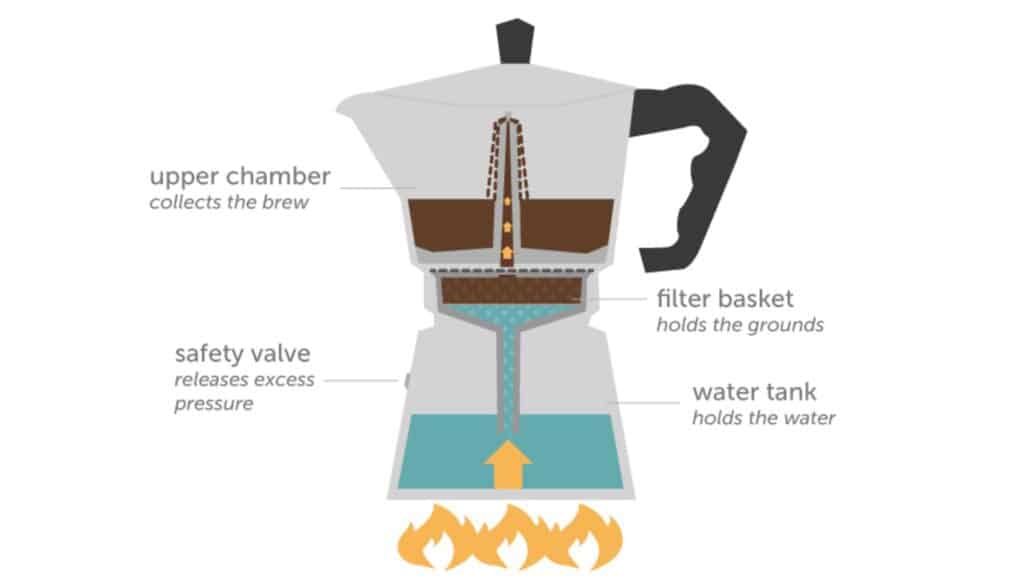
The Moka Pot, an ingenious piece of coffee-making equipment, consists of a straightforward yet effective design tailored to extract coffee under pressure. Its construction is divided into three key components, each playing a crucial role in the brewing process:
Basic Anatomy of a Moka Pot
Lower Chamber
- Function: The lower chamber holds water that, when heated, creates steam and pressure to push water through the coffee grounds.
- Design Considerations: It’s designed to withstand direct heat and is equipped with a safety valve to prevent excessive pressure buildup.
Filter Basket
- Function: This sits between the lower and upper chambers and holds the ground coffee. It’s precisely perforated to allow the pressurized water to pass through the coffee grounds, extracting their flavors.
- Design Considerations: The filter basket is designed for easy removal and cleaning, with its size determining the amount of coffee grounds that can be used, and thereby the strength of the brew.
Upper Chamber
- Function: The upper chamber collects the brewed coffee. It’s where the magic culminates, as the pressurized water, now turned into a rich coffee brew, makes its way from the filter basket.
- Design Considerations: The upper chamber often features a spout for easy pouring, and in many models, a transparent lid or window to watch the coffee as it brews.
Materials and Construction
The choice of material for a Moka Pot significantly affects its durability, heat conductivity, and overall taste of the coffee:
Aluminum
- Features: Lightweight and excellent heat conductivity, making it quick to brew coffee.
- Considerations: Prone to corrosion if not dried properly and can alter the taste of coffee over time.
Stainless Steel
- Features: Durable, resistant to rust and corrosion, and does not affect the coffee’s flavor. It’s also aesthetically pleasing with a modern look.
- Considerations: Generally more expensive than aluminum and may not heat as quickly, but offers longevity and flavor consistency.
Safety Features
Safety is paramount in the design of a Moka Pot, given the involvement of pressurized steam:
- Safety Valve: A critical feature located on the side of the lower chamber, designed to release pressure if it reaches beyond safe levels, thereby preventing accidents.
- Handle and Knob Materials: Made from heat-resistant materials to prevent burns when handling the pot during and after brewing.
- Gaskets: These ensure a tight seal between the lower and upper chambers, maintaining the necessary pressure while preventing leaks. They need regular inspection and replacement to uphold safety and efficiency.
The design and construction of a Moka Pot reflect a blend of functionality, safety, and aesthetic appeal, making it a revered tool in the art of coffee brewing. Its enduring design has stood the test of time, offering coffee lovers a reliable method to brew rich and flavorful coffee at home.
How a Moka Pot Works
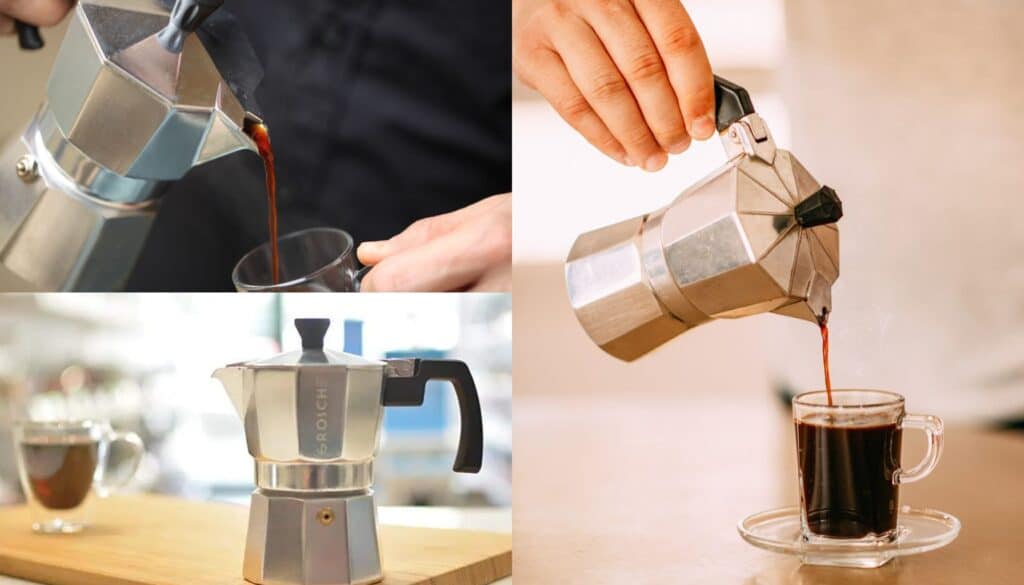
The Moka Pot operates on a relatively simple principle of physics, but the coffee it produces is anything but basic. Its ability to brew coffee that’s rich, aromatic, and robust makes it a favorite among coffee enthusiasts. Here’s a breakdown of the brewing process, the science behind it, and tips for getting the best out of your Moka Pot.
The Brewing Process Explained Step by Step
- Filling the Lower Chamber: Start by filling the lower chamber with cold water up to just below the safety valve. It’s crucial not to cover the valve to ensure safety during brewing.
- Adding Coffee to the Filter Basket: Fill the filter basket with finely ground coffee, leveling it off without tamping down. Tamping can lead to over-extraction or block the water’s path, creating too much pressure.
- Assembly: Place the filter basket into the lower chamber, then screw the upper chamber on tightly to ensure no steam escapes except through the coffee.
- Heating: Put the Moka Pot on a stove over medium heat. Too high heat can burn the coffee, while too low heat might result in under-extraction.
- Brewing: As the water in the lower chamber heats, it creates steam and pressure, forcing the water up through the coffee grounds, through the spout, and into the upper chamber. You’ll hear a gurgling sound when the coffee starts to emerge.
- Completion: Once the upper chamber is filled with coffee and you hear a hissing, bubbling sound, remove the Moka Pot from the heat. A cloth or cold water on the lower chamber can help stop the extraction immediately, preventing bitterness.
The Science Behind the Pressure and Extraction
- Pressure Generation: The Moka Pot uses steam pressure, generated by boiling water, to push hot water through coffee grounds. The pressure in a Moka Pot is around 1-2 bars, much lower than an espresso machine (which operates at about 9 bars), but enough to extract rich flavors.
- Extraction: The hot water extracts oils and soluble solids from the coffee grounds as it passes through the filter basket, resulting in a concentrated coffee brew. The optimal extraction rate is critical for balancing flavors without over-extracting, which can make the coffee bitter.
Tips for Optimal Use
- Grind Size: A fine grind is ideal for a Moka Pot, but it shouldn’t be as fine as an espresso grind to prevent clogging. The right grind size ensures even water flow and optimal extraction.
- Water Temperature: Starting with cold water allows for a more gradual extraction process, which is crucial for developing flavors. Hot water can speed up the process but may lead to over-extraction and bitterness.
- Heat Source and Control: Use medium heat to avoid burning the coffee. Adjusting the heat during brewing can help control the extraction rate and prevent the coffee from tasting burnt.
- Cleaning and Maintenance: Regular cleaning and maintenance are vital. Ensure the Moka Pot is thoroughly dried after washing to prevent oxidation, especially for aluminum pots. Replace the rubber gasket and the filter as needed to keep the seal tight and maintain optimal brewing conditions.
By understanding the workings of a Moka Pot and following these tips, you can consistently brew delicious coffee that captures the essence of the beans you use.
Advantages of Using a Moka Pot
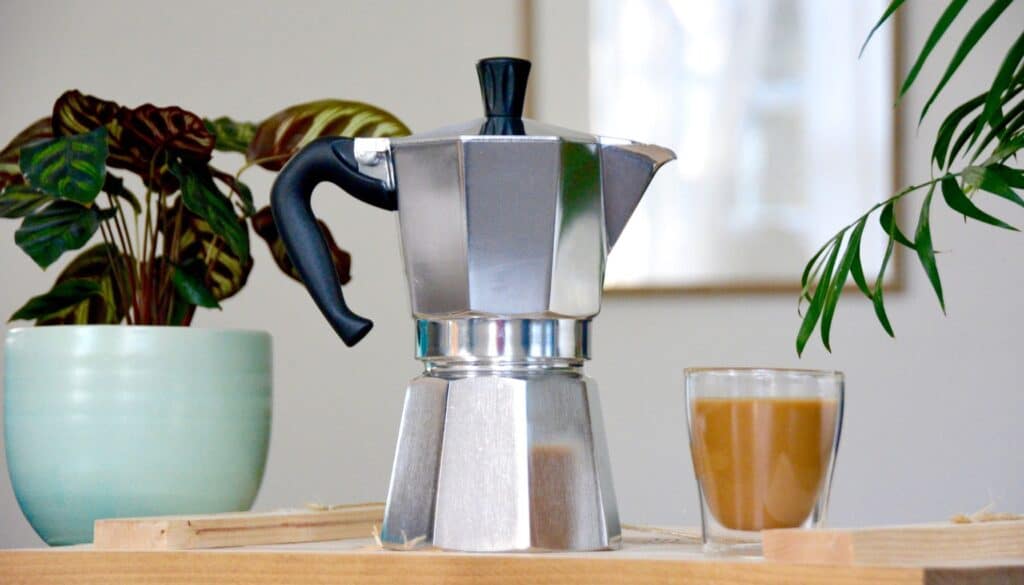
The Moka Pot, a revered staple in the realm of coffee brewing, boasts several advantages that contribute to its popularity among coffee enthusiasts worldwide. Its simplicity, affordability, and the quality of coffee it produces make it an attractive choice for many. Below are some of the key benefits of using a Moka Pot:
Affordability and Durability
- Cost-Effective: Compared to high-end espresso machines and other coffee brewing methods, the Moka Pot is remarkably affordable. Its initial purchase price is modest, making it accessible to a wide range of coffee lovers.
- Built to Last: Traditionally made from aluminum or stainless steel, Moka Pots are designed for longevity. With proper care, a Moka Pot can last for decades, making it not only an economical choice but also a sustainable one.
Ease of Use and Maintenance
- Simple Operation: The Moka Pot’s design is straightforward, making it easy to use. The brewing process involves just a few steps: filling the lower chamber with water, adding coffee to the filter basket, and placing it on a heat source. This simplicity appeals to both beginners and seasoned coffee aficionados.
- Hassle-Free Maintenance: Cleaning a Moka Pot is a breeze. Most models can be easily disassembled, allowing for thorough cleaning of each component. Regular maintenance involves washing with warm, soapy water and ensuring the safety valve is clear of coffee particles and residue.
Versatility in Brewing Strength and Volume
- Adjustable Strength: One of the charms of the Moka Pot is its adaptability in brewing strength. Users can alter the coffee-to-water ratio and the grind size to tailor the brew’s strength and flavor profile to their liking. This flexibility allows for experimentation and customization of each cup.
- Variety of Sizes: Moka Pots come in various sizes, catering to different needs. Whether you’re looking to brew a single cup or serve a group, there’s a Moka Pot designed to meet your requirements. This range in volume ensures that you can enjoy the same quality coffee, regardless of the quantity.
In summary, the Moka Pot stands out for its economic value, straightforward usage, and adaptable brewing capabilities. Its ability to produce espresso-like coffee without the need for expensive equipment makes it a cherished tool in kitchens around the world. Whether you’re a coffee purist or just someone who appreciates a good cup, the Moka Pot offers a unique combination of simplicity, efficiency, and versatility.
Comparing Moka Pot to Other Brewing Methods
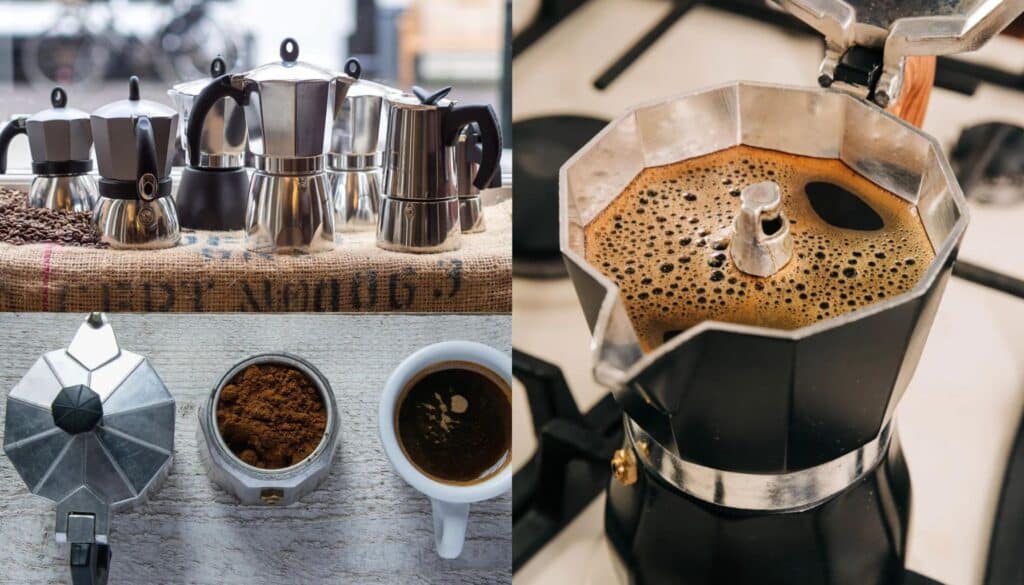
The Moka Pot is one of many methods for brewing coffee, each offering distinct characteristics in terms of flavor, texture, and convenience. Understanding the differences between these methods can help coffee enthusiasts find their preferred brewing style. Here’s a comparison of the Moka Pot with three other popular coffee brewing methods: Espresso Machine, French Press, and Drip Coffee.
Moka Pot vs. Espresso Machine
- Pressure and Extraction: The Moka Pot uses steam pressure (1-2 bars) to push water through coffee grounds, producing a concentrated brew. Espresso machines, however, use 9 bars of pressure, yielding a more intense and richer espresso shot with a distinctive crema on top. The espresso’s flavor and texture are more pronounced due to the higher pressure.
- Cost and Convenience: Moka Pots are significantly more affordable and compact than most espresso machines, making them accessible to a wider audience and suitable for smaller kitchens. Espresso machines can be expensive and require more maintenance, but they offer a broader range of coffee styles and finer control over the brewing process.
- Skill Level: Operating a Moka Pot is simpler and requires less skill than mastering an espresso machine, which demands precise control over grind size, tamping pressure, and extraction time.
Moka Pot vs. French Press
- Brewing Method and Flavor: The French Press immerses coarsely ground coffee in hot water, allowing for a full extraction and a rich, robust flavor. In contrast, the Moka Pot brews coffee by passing hot water through fine grounds under pressure, resulting in a stronger, more espresso-like coffee. The French Press coffee tends to have a heavier body and can include more of the coffee’s natural oils and sediment.
- Ease of Use: Both methods are straightforward, but the French Press might edge out in simplicity since it involves fewer components and does not require a heat source during the brewing process. Cleanup is also simpler with the French Press, as it usually involves just rinsing a single chamber and the plunger.
- Versatility: While the Moka Pot is primarily known for producing strong, espresso-like coffee, the French Press offers versatility in adjusting the strength and flavor by changing the brewing time and the coffee-to-water ratio.
Moka Pot vs. Drip Coffee
- Flavor Profile: Drip coffee makers typically produce a cleaner, lighter brew compared to the richer and more concentrated output of a Moka Pot. The paper filters used in drip machines remove most of the coffee oils and fine particles, resulting in a smoother cup with less body.
- Convenience and Volume: Drip coffee makers can brew larger quantities of coffee at once and often include programmable settings for automatic brewing. This makes them ideal for serving multiple people with minimal effort. In contrast, Moka Pots require more hands-on attention and are better suited for smaller quantities.
- Brewing Time: Drip coffee machines may take longer to brew a full pot compared to the relatively quick process of a Moka Pot, which can complete a brew in just 5-10 minutes, depending on the size of the pot and the heat source.
In summary, the choice between a Moka Pot, Espresso Machine, French Press, and Drip Coffee Maker depends on personal preferences for coffee strength, texture, convenience, and the ritual of brewing. Each method offers unique benefits and can suit different occasions and tastes.
Brewing the Perfect Cup with a Moka Pot
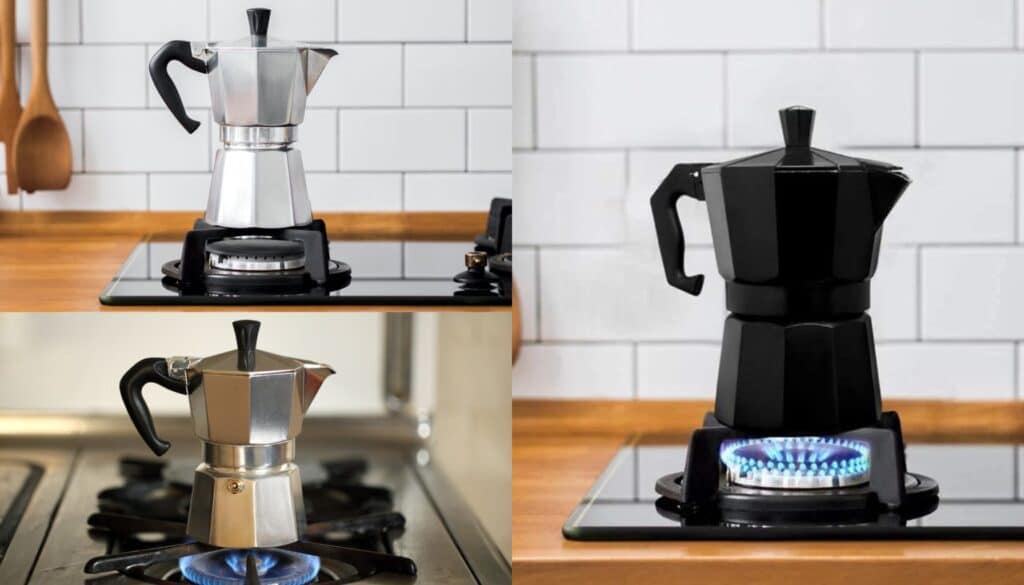
Brewing the perfect cup of coffee with a Moka Pot involves a combination of the right ingredients, equipment settings, and techniques. By following these guidelines, you can enhance your brewing experience and enjoy a delicious cup every time.
Selection of Coffee Beans and Grind Size
- Coffee Beans: The choice of coffee beans significantly influences the flavor of your brew. Freshly roasted beans are recommended for their full flavor profile. Experiment with different origins and roasts to find your preference, but medium to dark roasts often work well with the Moka Pot’s brewing method.
- Grind Size: A fine but not powdery grind is ideal for a Moka Pot, similar to table salt’s texture. Too fine, and you risk clogging the filter; too coarse, and the water will pass through too quickly, resulting in a weak brew. Consistency is key, so a burr grinder is preferred over a blade grinder.
Water Quality and Quantity
- Water Quality: Start with cold, filtered water to ensure no unwanted flavors interfere with the coffee’s natural taste. The minerals in water can affect extraction, so soft to moderately hard water is ideal.
- Quantity: Fill the lower chamber with water up to just below the safety valve. Overfilling can increase pressure dangerously, while too little water might not produce enough steam for a full extraction.
Heat Source and Brewing Time
- Heat Source: Use a low to medium heat setting to avoid burning the coffee. The goal is to heat the water gradually enough to extract the coffee flavors without scorching them.
- Brewing Time: The total brewing time should be about 5-10 minutes, depending on the size of your Moka Pot and the heat intensity. Once you hear a hissing or bubbling sound, indicating that the water has finished passing through the coffee, remove the pot from the heat source immediately to prevent burning.
Troubleshooting Common Issues
- Coffee Tastes Burnt: This usually occurs if the heat is too high or the pot is left on the stove for too long after brewing. Use lower heat and monitor the brewing process closely.
- Coffee is Too Weak or Watery: Check if the grind is too coarse or if you’re not using enough coffee. Ensure the filter basket is evenly filled with coffee and adjust the grind size as needed.
- Moka Pot Leaks or Coffee Spurts Out: Ensure the pot is properly sealed before use. Check the gasket and replace it if it’s worn out. Also, make sure not to overfill the water chamber.
- Coffee Brews Too Slowly: This might be due to a clogged filter or too fine a grind, creating resistance to water flow. Clean the filter and adjust the grind size.
By paying attention to these details and practicing your technique, you can master the art of brewing with a Moka Pot. Each cup offers an opportunity to refine your preferences and skills, leading to the perfect brew tailored to your taste.
Care and Maintenance of a Moka Pot
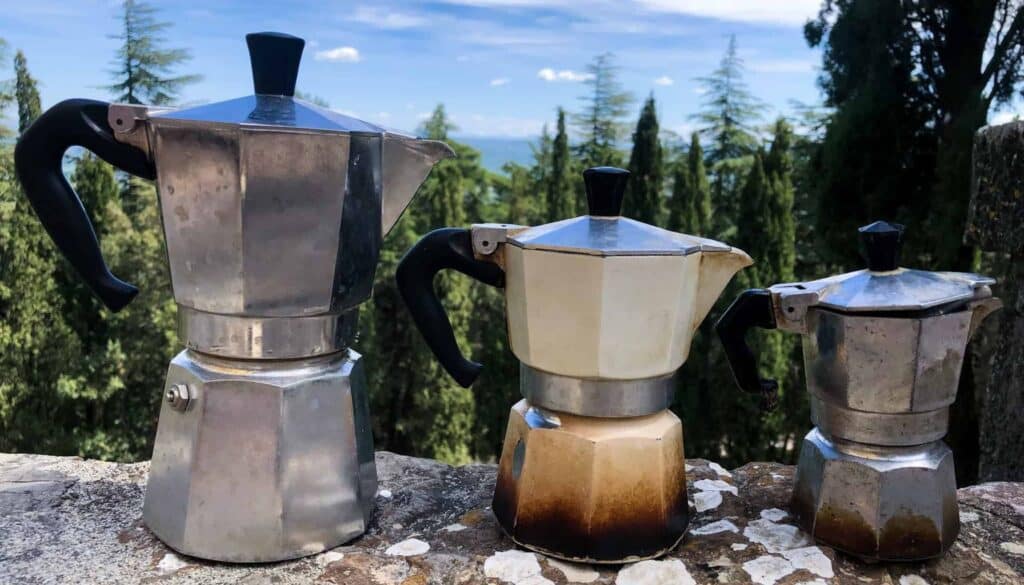
Proper care and maintenance of a Moka Pot are essential not only for ensuring the longevity of the pot but also for maintaining the quality of the coffee it brews. Regular cleaning and occasional deep cleaning can prevent buildup of coffee residue and minerals, which can affect the taste of your coffee. Here’s how to keep your Moka Pot in top condition:
Cleaning and Drying After Each Use
- Disassemble and Clean: After each use, wait for the Moka Pot to cool down, then disassemble it into its components—the upper chamber, filter basket, and lower chamber. Wash each part with warm, soapy water and a soft sponge or brush. Avoid using abrasive materials that can scratch the surface, especially for aluminum pots.
- Rinse Thoroughly: Make sure to rinse each component with clean water to remove any soap residue.
- Dry Completely: Dry the parts with a clean towel or let them air dry completely before reassembling. This step is crucial to prevent mold growth and oxidation, especially in aluminum Moka Pots.
Decalcifying and Removing Coffee Oils
- Frequency: Depending on the hardness of your water and how frequently you use your Moka Pot, it should be decalcified every 1-3 months to remove mineral buildup from the water.
- Natural Decalcifying Agents: Use a natural descaling solution like white vinegar or citric acid mixed with water. Fill the lower chamber with the mixture, then run a brewing cycle without coffee, stopping before the solution passes completely into the upper chamber. Let it sit for about 30 minutes, then complete the cycle. Rinse thoroughly afterward.
- Removing Coffee Oils: Over time, coffee oils can accumulate and become rancid, affecting the flavor of your brew. A soak in warm, soapy water or using a coffee-specific cleaner can help dissolve these oils. Rinse thoroughly after cleaning.
Long-Term Storage and Care
- Storage: If you plan to store your Moka Pot for an extended period, ensure it’s clean and completely dry to prevent mold and corrosion. Disassemble the parts and store them separately or loosely assembled to allow air circulation.
- Gasket and Filter Maintenance: The rubber gasket and the metal filter should be checked regularly for wear and tear. Replace them if they become hard, brittle, or damaged to ensure a proper seal and efficient brewing.
- Avoiding Corrosion: For aluminum Moka Pots, avoid leaving water or coffee in the pot for long periods, as this can lead to oxidation and corrosion. Stainless steel pots are more resistant to corrosion but still benefit from being kept dry and clean.
Proper maintenance of your Moka Pot not only extends its life but also ensures that each cup of coffee is as delicious as the first. Regular cleaning and care are the keys to preserving both the pot and the quality of your coffee.
Conclusion
The Moka Pot proves that timeless design and the joy of making the perfect cup of coffee at home never go out of style. Its simple, affordable approach to brewing rich, aromatic coffee has made it a favorite method around the world. The Moka Pot’s special talent for making intensely flavorful coffee, very much like espresso but without needing expensive, big equipment, turns it into a priceless gadget for coffee enthusiasts.
Using a Moka Pot brings more benefits than just great coffee. Its sturdy design, along with being easy to use and take care of, makes this brewing method handy and sustainable for everyone. The Moka Pot lets you adjust the strength and amount of your brew, so you can make your coffee just the way you like it, whether that’s strong and bold or smooth and mild.
Choosing to use a Moka Pot is about more than learning a new way to make coffee; it’s an opportunity to dive in and play with the coffee-making process. The kind of beans you pick, how fine you grind them, the water’s heat, and how long you brew can all change the coffee’s taste. By tweaking these factors, you can discover a variety of tastes and strengths, perfecting your brewing skills to get your ideal cup of coffee.
Making coffee with a Moka Pot isn’t just about the coffee itself; it’s about enjoying the brewing ritual. This process is calming and engaging, giving you a break in your busy day. It helps you appreciate the art and science behind coffee, from picking the beans to the final pour.
In the end, the Moka Pot is more than a coffee maker; it’s your ticket to a deeper, more engaging coffee experience. Its lasting charm comes not just from the coffee it makes but from the adventure it offers. As you keep trying and exploring all the ways to brew coffee, let the Moka Pot lead you to a deeper appreciation and joy for every cup. Enjoy the simplicity, relish the process, and look forward to the delicious results with every brew.
References and Further Reading
- Business Insider. (n.d.). The best stovetop espresso makers and Moka pots. Retrieved from https://www.businessinsider.com/guides/kitchen/best-stovetop-espresso-maker
- The New York Times. (n.d.). Bialetti Moka Pot Review. Wirecutter. Retrieved from https://www.nytimes.com/wirecutter/reviews/bialetti-moka-pot-review/
- Serious Eats. (n.d.). How to Use a Moka Pot for Great Coffee. Retrieved from https://www.seriouseats.com/moka-pot-cheap-espresso-alternative
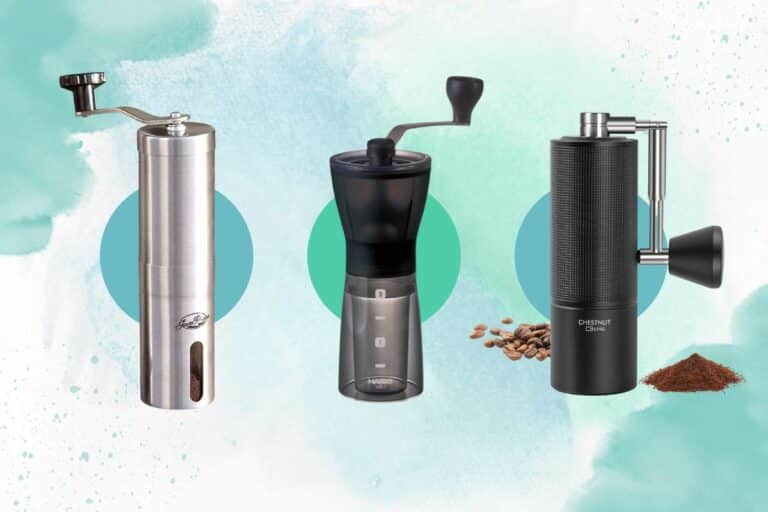




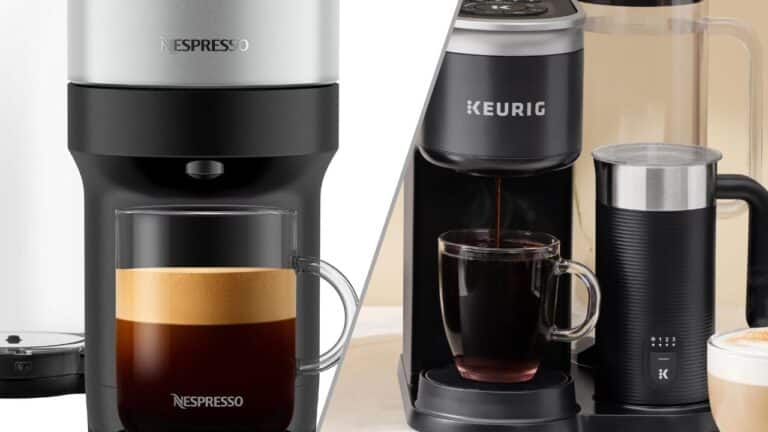

2 thoughts on “What is a Moka Pot?”
Needed to write you the bit of remark just to thank you so much over again regarding the gorgeous advice you have documented at this time. It has been unbelievably generous with you to supply freely what a few people could possibly have marketed for an e-book to help with making some profit on their own, primarily seeing that you could possibly have tried it if you desired. The pointers also worked to become a good way to understand that other people online have the same eagerness much like my very own to realize lots more on the topic of this matter. I’m sure there are thousands of more fun situations ahead for people who see your blog.
I went over this web site and I conceive you have a lot of fantastic info, saved to bookmarks (:.